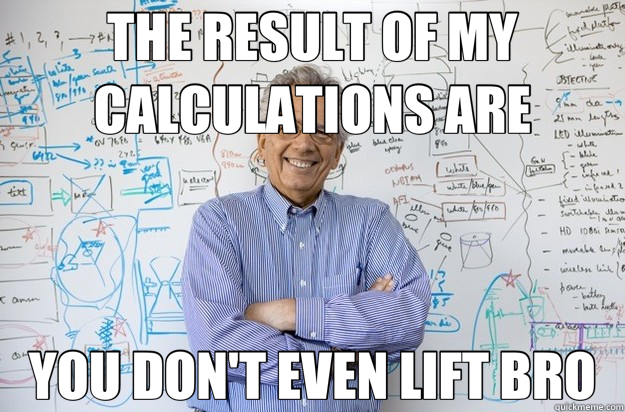How to Teach Complex Movements with Layering
Whenever I teach workshops (like these ones HERE), I tend to break down movements into a lot of detail to help attendees pick up on components that they may not have noticed before.
Does their foot position affect their hips? How are they breathing? What joints or segments initiated the movement? Was there any movement from joints or segments that didn’t benefit the end result of the exercise? Do I even lift at all?
While this is all information that can help trainers learn how to improve their coaching, often as I’m getting a volunteer to go through the process, their first response is usually “There’s so much to think about.”
Well, yeah, there is. That’s why they’re complex movements.
A major reason why incredibly skilled lifters can make a movement look so easy and effortless is because they master the details to the point of not even thinking about them. Consider the incredible amount of fine tuning involved in a movement like an olympic lift, and think of how much analysis paralysis would occur if the person focused on every single detail to be done for the lift, versus the one or two things that they need at the moment.
Even a somewhat less complex movement with fewer moving parts, but no less impressive is Eddie Hall’s monstrous 500kg (yep, kilogram, meaning over 1100 pounds) deadlift that almost killed him.
Nope. Apparently I don’t actually even lift.
These aren’t the kinds of movements these guys likely started with, and they weren’t nearly this skilled all those years ago. I’m sure if you asked them they could still find elements of those successful lifts they weren’t happy with and could improve on.
But let’s say they’re in the gym for the first time and looking to learn how to do these awesome feats. Their coach will likely build them up gradually with different skill sets to help eventually get to these levels of awesomeness versus trying to throw everything at them at once.
Think of it like learning how to add and subtract before you get to advanced calculus.
When I work with a client on a new skill (especially if they’re a new client I haven’t worked with before), I try to under-coach at the beginning and build up as we go. What I mean by this is I’ll start with an exercise and simply outline the starting position and the motion I want them to go through. I might include one or two concepts on top of that like how to breathe or where they should feel it working, but that’s about it.
From there, I watch how they perform the movement and see whether I need to step in to offer any other coaching cues to help them get closer to the desired effect of the exercise. This way I only have them focus on the stuff they need to focus on at the time and limit the unnecessary (at that time) confusion about the movement until they have a decent handle on it.
After the set I’ll ask a couple of key questions: what did you feel working? Did that feel easy or hard for you? Were you doing anything during that that helped you find some success with the movement?
I can tell someone where they should feel an exercise working, but I can’t tell them where they will feel it working. That’s up to them. If they tell me the target muscles are doing their jobs, awesome, we can ratchet up the intensity. If it’s the absolute opposite of where they should feel it, we need to change something.
For instance, if a client says they feel their upper traps during a row, and not their lats, they’re not moving their shoulder blade into the right positions to get the lat to do the work over the upper traps, so we have to adjust the movement.
Sometimes how you frame an exercise can help someone execute it more effectively. If a client has worked with me for a while, I’ll say something like “do this exercise like you would do this other movement” to bring up a familiar movement for them. If I haven’t worked with them for long, I might use a different cue that they might know about. When I coach people to flex their glutes I’ll use cues like “crush your underwear” because that’s something we’ve all gone through. If you’re the kind of person who doesn’t wear underwear, just make sure you wipe down the equipment when you’re done using it.
This is the big difference between intrinsic and extrinsic cues. An intrinsic cue helps someone frame the desired outcome around their own experiences and conceptualization of the world around them. An extrinsic cue gives them information about the desired outcome without such framing. “Flex your glutes” is extrinsic, whereas “imagine you’re trying to crush your underwear with your bum” is an intrinsic cue.
Everyone might learn differently, whether that be what cues or exercises work for them versus someone else, and even to how quickly they pick up on the objective itself. In many cases the goal is to help facilitate the process versus trying to force it, so good coaching comes down more to listening and watching than anything else.
Here’s a sample flow:
Step one: “Alright, let’s do this new exercise. Start off like this, and then move that like I’m showing you here.”
Listen: let them do the movement and see what happens.
Step two: “try to brace this area more or move more from this segment over here. Yes, like that.”
Listen: let them do the movement with the new adjustment and see what happens.
Step three: “How did that feel? What did you feel working? Okay, let’s do it again but this time try to focus on (extrinsic or intrinsic cue)”
Listen: let them do the movement with the new adjustment and see what happens.
Step four: “try to brace this area more or move more from this segment over here. Yes, like that.”
Listen: let them do the movement with the new adjustment and see what happens.
Step five: “How did that feel compared to the last time? What did you feel working differently? Okay, let’s do it again but this time try to focus on (extrinsic or intrinsic cue)”
And so on.
This give the opportunity to add in layers of complexity to a movement by building on what they’re currently doing well or on their current frame of reference for the movement versus overloading them with details. In the end, it comes down to listening and adjusting as you go versus expecting perfection on the first and every subsequent rep of the exercise. Allow learning to occur to help people get more from the movement, and to also allow for a greater transferability to other movements they’ll be doing in the future.


One Response to How to Teach Complex Movements with Layering